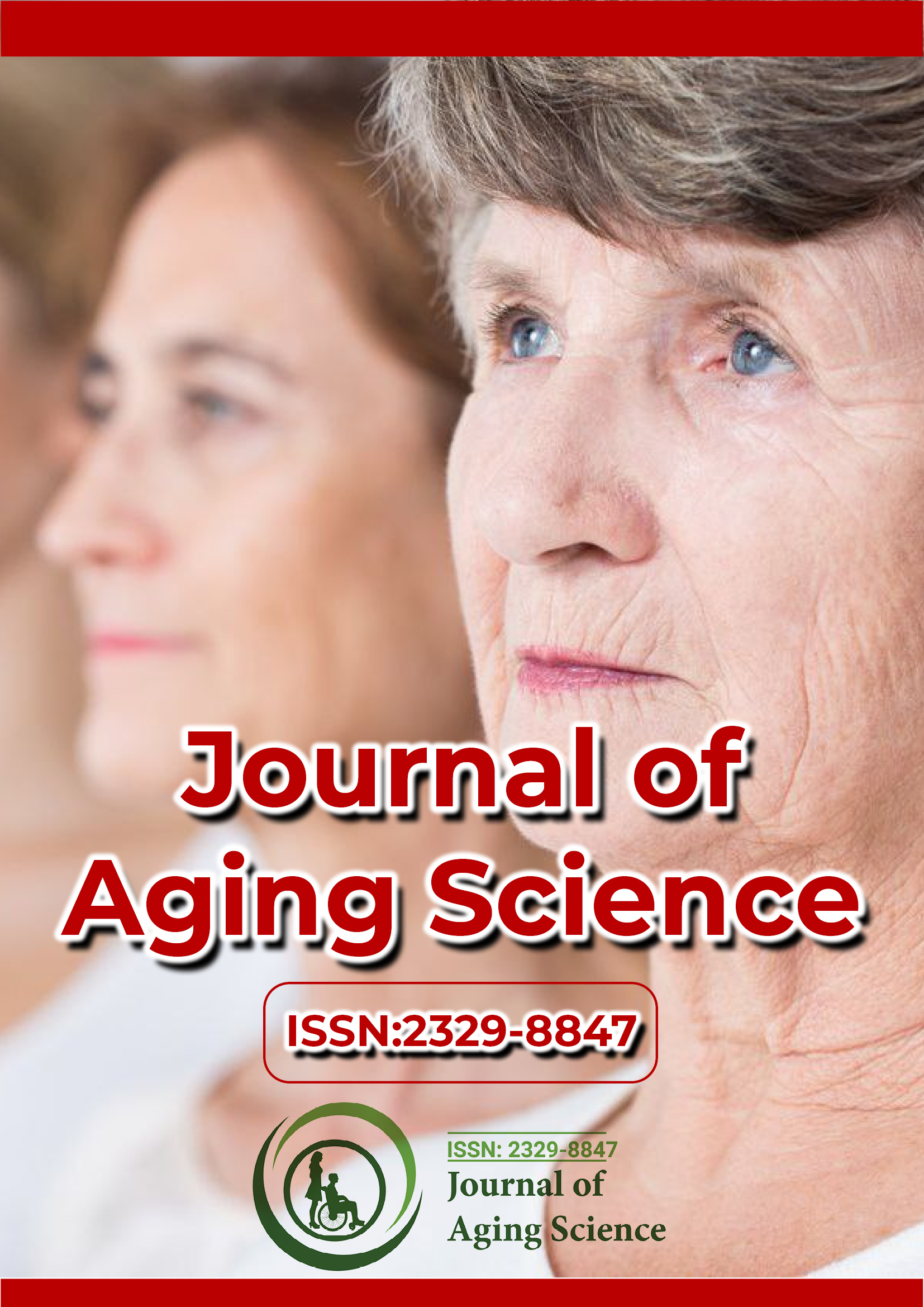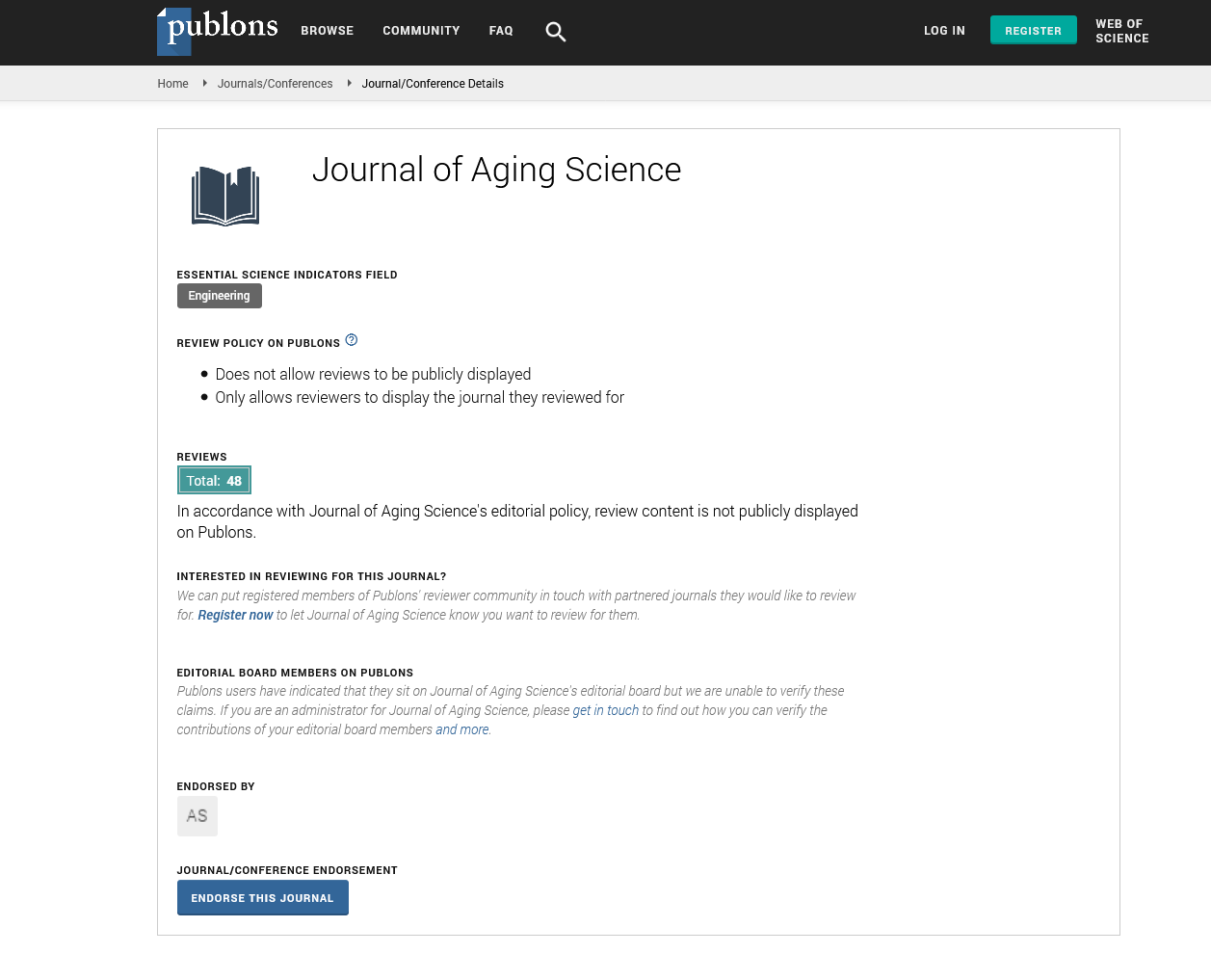Indexed In
- Open J Gate
- Academic Keys
- JournalTOCs
- ResearchBible
- RefSeek
- Hamdard University
- EBSCO A-Z
- OCLC- WorldCat
- Publons
- Geneva Foundation for Medical Education and Research
- Euro Pub
- Google Scholar
Useful Links
Share This Page
Journal Flyer

Open Access Journals
- Agri and Aquaculture
- Biochemistry
- Bioinformatics & Systems Biology
- Business & Management
- Chemistry
- Clinical Sciences
- Engineering
- Food & Nutrition
- General Science
- Genetics & Molecular Biology
- Immunology & Microbiology
- Medical Sciences
- Neuroscience & Psychology
- Nursing & Health Care
- Pharmaceutical Sciences
Commentary - (2025) Volume 13, Issue 3
Mitochondrial Dysfunction in Aging: Understanding Energy Decline and Its Impact on Longevity
Adam Carle*Received: 30-Jun-2025, Manuscript No. JASC-25-29554; Editor assigned: 03-Jul-2025, Pre QC No. JASC-25-29554 (PQ); Reviewed: 17-Jul-2025, QC No. JASC-25-29554; Revised: 24-Jul-2025, Manuscript No. JASC-25-29554 (R); Published: 31-Jul-2025, DOI: 10.35248/2329-8847.25.13.416
Description
Mitochondria, often referred to as the powerhouses of the cell, play an essential role in energy production, cellular signaling and metabolic regulation. They generate Adenosine Triphosphate (ATP) through oxidative phosphorylation, fueling nearly all physiological activities. As individuals age, mitochondrial function declines, leading to impaired energy metabolism and the onset of numerous age-related conditions. This gradual deterioration, widely described as mitochondrial dysfunction, is considered one of the hallmarks of aging.
One key aspect of mitochondrial aging is the accumulation of mitochondrial DNA (mtDNA) mutations. Unlike nuclear DNA, mtDNA is more vulnerable to damage due to its proximity to Reactive Oxygen Species (ROS) generated during ATP production. Over time, these mutations impair mitochondrial efficiency, reduce ATP output and increase oxidative stress. This creates a feedback loop in which damaged mitochondria generate more ROS, further accelerating cellular damage.
Mitochondrial dysfunction also impacts apoptosis, the programmed cell death pathway. Healthy mitochondria release signaling molecules that regulate apoptosis, ensuring the removal of damaged or abnormal cells. With aging, this regulation becomes less efficient, leading to the survival of dysfunctional cells or, conversely, excessive cell death. Both outcomes contribute to tissue degeneration and weakened organ function.
Another significant factor is the decline in mitochondrial dynamics, which include fission, fusion and mitophagy. These processes ensure that damaged mitochondria are repaired, recycled, or eliminated. In young and healthy cells, fusion allows mitochondria to share contents and repair damage, while fission isolates defective sections for removal. Mitophagy, a specialized form of autophagy, then eliminates damaged organelles. During aging, reduced efficiency in these mechanisms leads to the accumulation of defective mitochondria, undermining cellular resilience.
Tissues with high energy demands, such as the brain, heart and skeletal muscles, are particularly affected by mitochondrial dysfunction. In the brain, impaired mitochondrial function contributes to cognitive decline and neurodegenerative conditions like Alzheimer’s and Parkinson’s disease. In the heart, reduced energy supply compromises cardiac output and increases susceptibility to cardiovascular diseases. In skeletal muscles, mitochondrial deterioration manifests as sarcopenia, the age-related loss of muscle mass and strength, which greatly affects mobility and independence in older individuals.
Emerging research highlights the role of mitochondrial dysfunction in systemic aging. For example, impaired mitochondria release Damage-Associated Molecular Patterns (DAMPs) that trigger inflammatory responses. This process contributes to inflammaging, a chronic, low-grade inflammation that underlies many age-associated disorders. Additionally, mitochondrial signals influence stem cell function, affecting tissue repair and regeneration capacities as individuals age.
Therapeutic strategies to counter mitochondrial dysfunction are gaining attention. One approach involves antioxidants, designed to reduce oxidative stress and protect mitochondrial integrity. Although general antioxidants have shown limited results in clinical studies, targeted antioxidants that specifically accumulate within mitochondria show greater potential. Compounds like MitoQ and SkQ1 are being investigated for their ability to slow mitochondrial deterioration.
Another strategy focuses on enhancing mitochondrial biogenesis, the process by which new mitochondria are formed. Activating pathways such as AMPK and PGC-1α has been shown to increase mitochondrial number and efficiency, improving energy metabolism in aged tissues. Exercise is a natural activator of these pathways, providing strong evidence for its role in sustaining mitochondrial health across the lifespan.
Caloric restriction and intermittent fasting also improve mitochondrial efficiency by reducing ROS production and stimulating autophagy. These dietary interventions activate cellular stress response pathways that strengthen mitochondrial function, extending lifespan in animal models. Translating these interventions to humans remains complex, but ongoing studies continue to examine their long-term effects.
Novel therapies are also emerging in the form of mitochondrial replacement and gene-editing technologies. Mitochondrial replacement therapy, originally developed for preventing inherited mtDNA disorders, holds potential for rejuvenating aged cells by introducing healthier mitochondria. Similarly, gene-editing tools like CRISPR-based systems are being explored to repair mtDNA mutations. While these techniques are still in experimental stages, they demonstrate the innovative directions aging research is taking.
Conclusion
Mitochondrial dysfunction lies at the heart of the biological processes associated with aging. Declining energy production, accumulation of mtDNA mutations, impaired dynamics and disrupted signaling collectively contribute to tissue and organ decline. Because mitochondria influence not only energy metabolism but also apoptosis, inflammation and stem cell activity, their dysfunction impacts nearly every aspect of aging physiology. Strategies aimed at preserving or restoring mitochondrial function hold significant potential for extending healthspan. Interventions such as exercise, dietary modification, targeted antioxidants and mitochondrial biogenesis enhancers have already demonstrated encouraging outcomes. Emerging technologies, including mitochondrial replacement and gene editing, suggest that even deeper rejuvenation may be possible in the future. Understanding mitochondrial dysfunction offers insight into the complex network of aging processes. By addressing the root causes of cellular energy decline, researchers and clinicians aim to improve quality of life and reduce the burden of age-related diseases. Continued exploration of mitochondrial biology is likely to remain an essential pathway toward healthier aging and longer lifespans.
Citation: Carle A (2025). Mitochondrial Dysfunction in Aging: Understanding Energy Decline and Its Impact on Longevity. J Aging Sci. 13:416.
Copyright: © 2025 Carle A. This is an open-access article distributed under the terms of the Creative Commons Attribution License, which permits unrestricted use, distribution and reproduction in any medium, provided the original author and source are credited.

